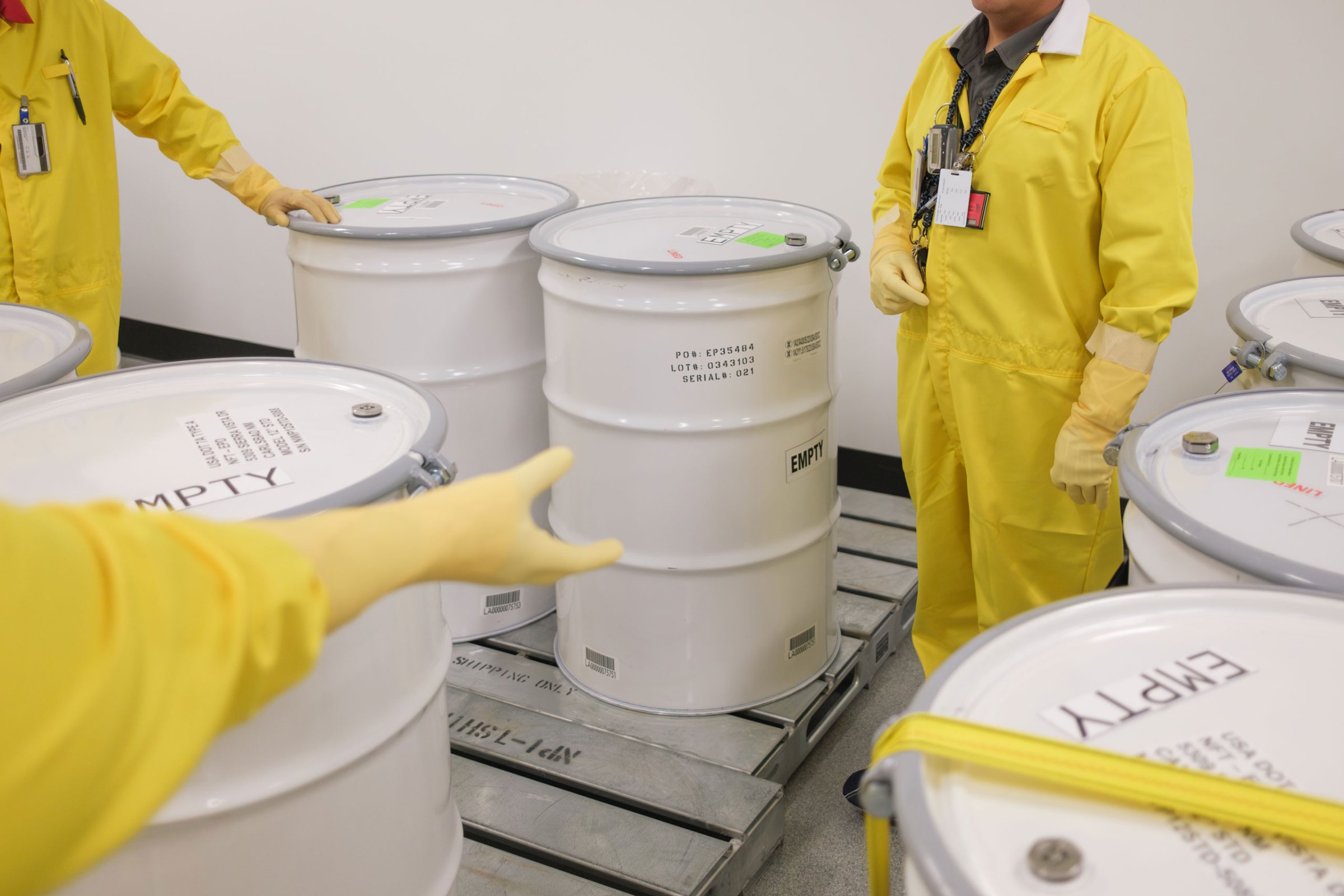Something unusual is happening inside the plutonium facility at Los Alamos National Laboratory in New Mexico. PF-4, as it is known to top government officials, is the heart of America’s nuclear complex, a lab where scientists and engineers study and experiment on highly radioactive materials in tight secrecy. Recently, employees have discovered yellow plastic tents encasing equipment and rendering it inaccessible. At Los Alamos, where even the cleaning crews and firefighters require high-level security clearances, you might think the tents are designed to restrict access to the latest wonder weapon or scientific breakthrough. The truth is more mundane—and more telling. “It’s part of our expansion plans,” Matthew Johnson, a senior lab manager, tells me during a rare tour of the fortified building. “All the old stuff is coming out.”
PF-4 is being transformed from an experimental laboratory that focuses mostly on research into a facility that mass-produces plutonium “pits,” the grapefruit-sized cores inside every nuclear bomb in America’s arsenal. Los Alamos— the lab synonymous with the dark art of nuclear-weapon development—hasn’t produced a certified pit in over a decade and has never had to produce more than 10 in a single year. But in 2018, Congress passed a law mandating that PF-4 produce 30 pits a year by 2026. Around $5 billion has already been spent to overhaul the cramped, aging facilities. The Biden Administration has pumped $4.6 billion into Los Alamos this fiscal year alone—a 130% budget increase over what the lab received just five years ago. Truckloads of new work stations, lathes, and furnaces are set for installation. Coast-to-coast recruiting efforts are underway to increase the lab’s workforce, which is already at a record 17,273.

Not long ago, such ambitions would have been unthinkable. Following the Soviet Union’s collapse in 1991, the U.S. stopped designing, building, and testing new nuclear warheads. Stockpiles were slashed, labs’ budgets cut, and a highly skilled workforce allowed to dwindle. But after a three-decade break from manufacturing nuclear weapons, the U.S. is getting back into the game. Another arms race may be upon us, triggered by China’s growing ambitions and escalating hostilities with Russia, the world’s other nuclear superpower. Since President Biden took office, both nations have wielded their arsenals to threaten adversaries and coerce neighbors. The last remaining nuclear-arms treaty, known as New START, is set to expire in 2026, raising fears about a new era of unchecked expansion. All nine nuclear powers are scrambling to modernize their arsenals and build new weapons.
More from TIME
The effort to restart America’s nuclear-weapons manufacturing program in response represents the biggest test since the Manhattan Project. A wide range of arms-control experts and nuclear watchdogs, as well as a handful of lawmakers, are frantically sounding the alarms, warning of the existential risks of the course that leaders in both parties have taken. Critics say the U.S. is repeating the mistakes of the Cold War by funneling billions of taxpayer dollars into weapons that will hopefully never be used and haven’t been tested in more than a generation. They worry about the potential environmental disasters. Washington is reacting to geopolitical concerns without considering the consequences of restarting our own bomb-making factories, says Greg Mello, executive director at the Los Alamos Study Group, an Albuquerque-based watchdog organization. “We’re rushing into a new arms race with our eyes wide shut,” Mello says, “forgetting everything that went wrong before.”
At PF-4, they are well past such debates. Lab managers are busy unsealing and combing through decades-old archives to extract the technical and engineering expertise for plutonium pits that has been all but lost in the U.S. To get a sense of how the headlong rush is unfolding, and the risks that come with it, I accompanied Johnson, a tall, balding metallurgist who’s spent 21 years at the lab, as he led a small group of reporters on a rare trip inside the center of PF-4. It took more than a year to receive government approval for the visit to the facility. All plutonium operations are required to pause if outsiders are on the floor. But with a brief work-stoppage in place, we were given a day pass in late June to slip behind the tiers of barbed-wire fences, code-accessed security doors, and legions of armed guards to catch a glimpse of America’s new nuclear age.
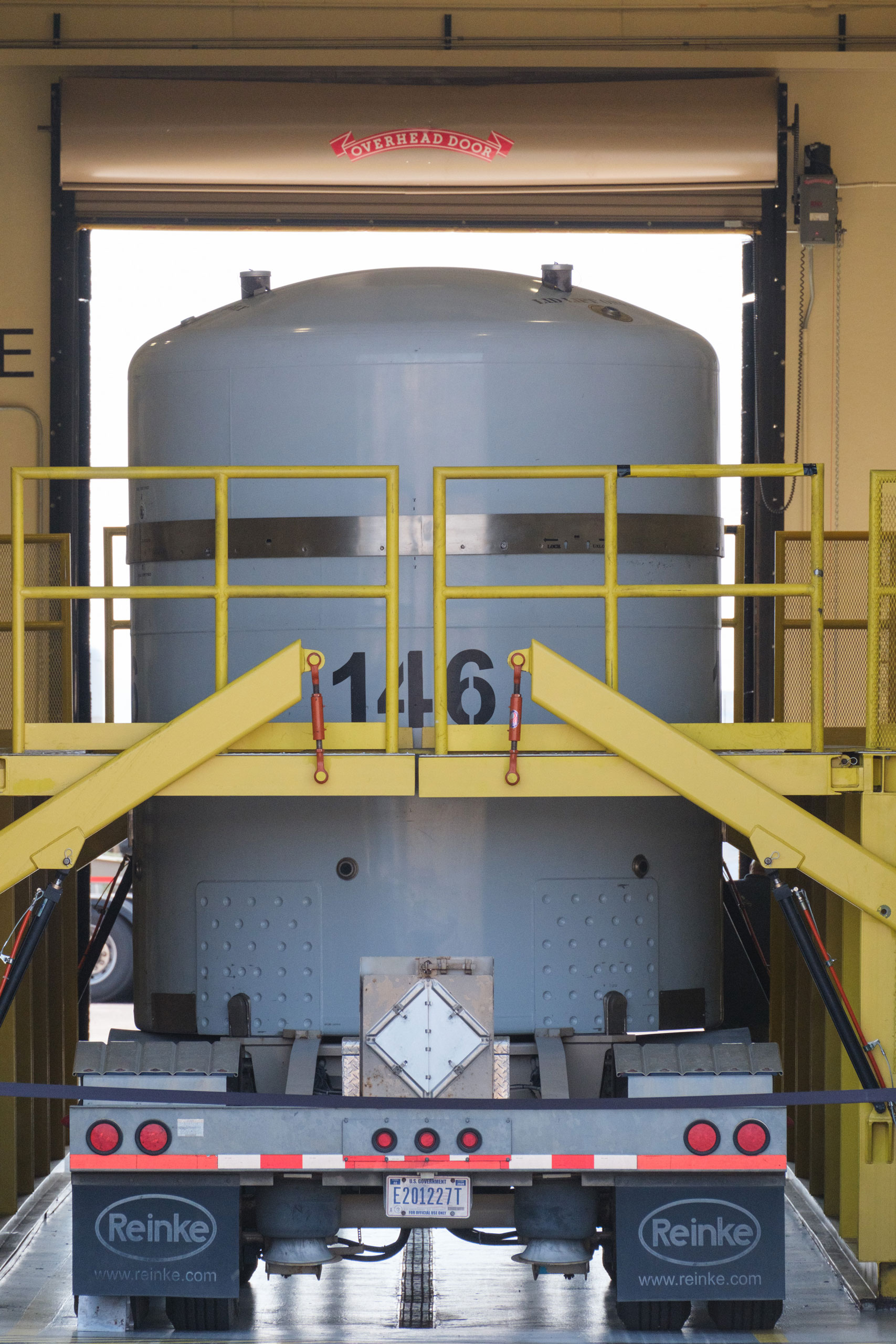
Before stepping onto the PF-4 operations floor, we pulled on thick lab coats, cotton shoe-coverings, protective goggles, and personal radiation-detection badges. It’s a windowless, low-slung facility, with a long gray hallway dividing a series of rooms purpose-built for plutonium production. Identity confirmation is required at each door, even though every employee at PF-4 has a Q-level security clearance from the Energy Department, the highest a civilian can hold.
Weapons-grade plutonium has a radioactive half-life of 24,000 years. The level of radioactivity in these rooms, called “hot areas,” is constantly monitored. When you walk into a new chamber, you’re met with the unnerving clicks of a Geiger counter reverberating inside. The personal-safety protocols underline the stakes. One member of our tour had a notebook quarantined after it mistakenly dropped to the floor. Before leaving a room, we had our hands and feet individually checked for contamination. We also were required to take two full body-scans, stepping into different floor-to-ceiling radiation-detection machines, before we left the facility.
Inside each production room, workers stand under bright fluorescent lights by a series of linked stainless-steel work stations called gloveboxes. They place their hands into specialized rubber gloves and peer through leaded-glass windows as they shape the plutonium. An accidental slip of the hand could result in catastrophe. There’s virtually no safe level of human exposure to plutonium if it’s inhaled. Even the smallest speck—a one-thousandth of a gram, hidden to the human eye—could kill. “We have to account for every flake,” Johnson says. The lab has an elaborate air circulation system; the rooms are at a lower pressure than the outside hallways. Each glovebox has a slight vacuum, designed to ensure that if there is a breach, the particles are contained inside the sealed box.
The U.S. no longer manufactures new plutonium, so workers at PF-4 take old pits from retired warheads sent from the Pantex plant in the Texas panhandle, which assembles, disassembles, and stores parts for America’s nuclear arsenal. The pits are recycled through a process that purifies them of radioactive elements, which accumulate over time. To do this, plutonium winds its way from glovebox to glovebox through an overhead trolley system snaking through the complex. Dumbwaiters move it up and down from the trolley. The plutonium is melted, machined, welded, and inspected. Mastering these skills can take up to four years of training and mentorship, Johnson says. Each worker must undergo routine mental and physical health checks throughout the year to ensure they can handle weapon components.
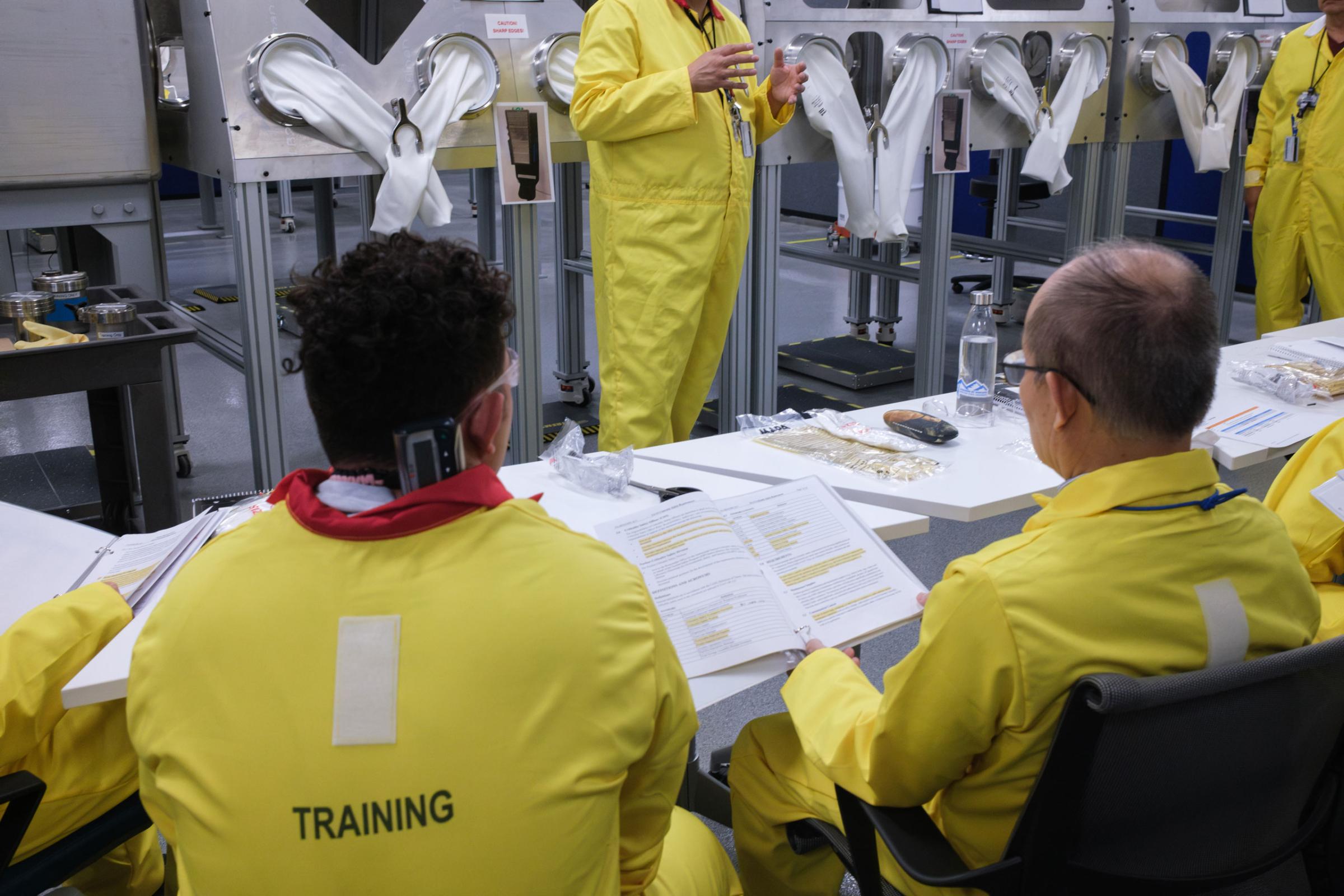
Up to 1,000 employees work inside PF-4 on a given day, but less than 10 can perform the final step of the assembly, which involves welding pieces of cast plutonium together to form a pit. The task must be done by hand, inside a large walk-in glovebox. Workers wear respirators and several layers of personal protective equipment. The pit then undergoes an inspection process: it’s leak-checked and radiographed, like a medical CT scan, to ensure it meets specifications. If it passes, it’s stamped with a small diamond and sent back to Texas, where it will stay until it’s plugged into a new W87-1 warhead, which is still under development, expected to be completed sometime within the next decade.
The W87-1 will be the first 100% newly manufactured nuclear warhead in the U.S. stockpile since the end of the Cold War. Its pit will be encased in plastic explosives designed to detonate with impeccable timing, compressing it, in just a fraction of a second, from the size of a grapefruit into the size of a golf ball. Fission from this first stage of the process spits out neutrons, triggering an atomic chain reaction that generates a massive release of energy—an explosion. The subsequent radiation, pressure, and energy then fuses two types of heavy hydrogen, tritium and deuterium, to form helium. Additional neutrons fire from this process, creating a fission-fusion feedback loop that happens so quickly it appears instantaneous. It culminates with a fireball that reaches into the millions of degrees, followed by a blast that can level buildings for miles around.
Read More: Donald Trump is Playing a Dangerous Game of Nuclear Poker.
Los Alamos has made 11 development pits so far this year, but none of them are destined for warheads. The first proof-of-concept weaponized pit is slated for completion at the end of 2024, says Robert Webster, Los Alamos’ deputy director for weapons. Webster says he’s confident his team can reach 30 pits per year by 2030. “It could be sooner,” he says, adding that the most important thing is that it’s done right. “We’re still cleaning up the legacy mess that we made by working the way we did.”
Others are skeptical. The Government Accountability Office (GAO) reported in January that it’s highly unlikely PF-4 will be able to meet its congressional mandate of building 30 pits annually on the prescribed timetable. Another larger facility, the Savannah River Site in South Carolina, which has never produced a single pit, has been tasked with producing 50 per year by 2030. The challenges of building new facilities and re-configuring existing ones with cutting-edge equipment are compounded by the extreme dangers of radioactive plutonium and waste disposal. All this may result in the federal government spending up to $24 billion before Los Alamos and Savannah River can reach their combined target of 80 pits per year, the report says. And rushing has its risks.


The environmental hazards of producing plutonium pits are well-established. The last time the U.S. made pits on a mass scale was in 1989, at the Rocky Flats site in Colorado. Production at the plant, which churned out about 1,000 pits per year, was shut down following a raid by the FBI and Environmental Protection Agency that discovered serious environmental violations. There was enough radioactive waste on the premises to cover a football field to a depth of 20 ft. Some 62 pounds of plutonium were found caked inside the plant’s air ducts.
Plutonium poses grave danger to anyone who doesn’t have proper protective equipment, and the total human toll of the work performed at Rocky Flats is unknown. Judy Padilla, 76, worked 22 years at Rocky Flats, most of them handling plutonium in gloveboxes. Padilla says she’s horrified that another generation will be manufacturing pits. She developed a host of medical issues that began during her time at the plant, including a tumor that required a mastectomy of her right breast. Her husband Charles, who also worked at the plant, died in 2014 after battling kidney cancer.
Padilla, who attributes both cases to radiation and chemical exposure at Rocky Flats, received $125,000 from the government after Charles died. The Energy Employees Occupational Illness Compensation Program Act, passed at the end of the Clinton Administration, provides funding to former nuclear employees on an individual basis, but Padilla says it’s littered with loopholes that are better designed to deny claimants than help them. “My advice to younger people doing this work is: Be careful,” she says. “I thought my government would back me up if I got sick and take care of me. That never happened. It sounds really bitter. But yeah, I’m bitter. I consider myself a walking time-bomb.”
The safety record of Los Alamos has always been intensely scrutinized, particularly in the post-Cold War years. “Is There Really a Cowboy Culture of Arrogance at Los Alamos?” ran a Dec. 2004 headline in the trade publication Physics Today. The question followed a series of high-profile lapses at the lab, including a trove of missing classified documents and an incident in which an intern suffered an eye injury from a laser. The biggest blunder arguably came in 2011, when technicians took a photograph of eight ingots of plutonium lined up side-by-side on a work table to impress their bosses. It may have looked cool to them, but putting radioactive rods in close proximity risked triggering a chain reaction that could have produced a fatal burst of radiation, capable of killing anyone in the room. Plutonium pit production ended the following year, and hasn’t restarted until now.
In 2018, Triad National Security was named as the new contractor to run the lab for the U.S. Energy Department. The company has stated that safety is a core pillar of its operations, including pit production. But workers’ missteps continue to be cited by the Defense Nuclear Facilities Safety Board, which provides independent federal oversight. Jill Hruby, head of the National Nuclear Security Administration, the Energy Department agency that oversees nuclear weapons, wrote a letter in May to Triad for a formal explanation on four “nuclear safety events” that took place between February and July 2021. The incidents included two separate floods, a glovebox breach, and an instance in which an unsafe amount of fissionable material was placed in a dropbox. An investigation attached to the letter noted a “significant lack of attention or carelessness” for worker and public safety.


Mistakes like these only heighten skepticism about how Los Alamos can possibly mass-produce plutonium pits on the appointed schedule without risking the health of its workers and surrounding community. Lab officials recognize that the project will generate unprecedented levels of hazardous waste. The most radioactive waste Los Alamos produces, called transuranic waste, primarily involves contaminated gloves, tools, equipment, and other debris that are typically stuffed into 55-gallon drums stored on site until they can be hauled to an underground facility in southeastern New Mexico. The lab projected the number of drums to spike to 2,000 this year, double the tally of just three years ago, according to a 2021 report delivered to Congress.
“It’s difficult to comprehend the level of contamination, the diversion of amounts of money into something that, in my view, will not improve national security,” says Jay Coghlan, executive director of Nuclear Watch New Mexico, a Santa Fe-based watchdog.
The dangers, of course, stretch far beyond New Mexico. Dread of nuclear annihilation hung over the globe throughout the Cold War. That fear is practically inscribed by history in the creosote-dotted hills around Los Alamos, the birthplace of The Bomb. Located atop a secluded mesa between the Jemez and Sangre de Cristo mountains, its transformation from a high desert outpost into a boomtown began in 1943, when more than 8,000 scientists, soldiers, and other personnel arrived to work for the Manhattan Project’s secret “Site Y” laboratory, under the direction of the theoretical physicist J. Robert Oppenheimer.
The picturesque setting for Oppenheimer’s pursuit of an atomic bomb contributed to the sense of insularity. Outsiders were not welcome. The people who worked and lived at Los Alamos were bound by secrecy and, with few exceptions, unable to leave. To this day, the people on this isolated plateau say they’re “on the hill,” which by default means that everyone else in the world is “off” it. But the ingrained seclusion of Los Alamos isn’t just semantic and geographic. It’s hard to find anyone in the community of 13,000 who doesn’t either work at the lab or have a neighbor, friend, or family member who does. It is a company town where even the street names gesture to its controversial past: Oppenheimer Drive, Trinity Drive, Manhattan Loop.
The lab developed the first atom bombs dropped on Hiroshima and Nagasaki, which killed and maimed hundreds of thousands of Japanese in 1945. Those were crude, comparatively simple devices that produced explosive yields measured in kilotons, or thousands of tons of TNT. In the arms race that ensued over the following decades, weapons designers at Los Alamos came up with ever more lightweight and destructive weapons—some so small that they allowed for a dozen city-busting warheads to fit inside a single ballistic missile’s nose cone. Today’s staged-thermonuclear devices produce explosive yields measured in megatons, or millions of tons of TNT—weapons far more lethal than Oppenheimer’s original. When the U.S. began pursuing such bombs, Oppenheimer discouraged it, calling them a “weapon of genocide.”

Oppenheimer envisioned the A-bomb program as a one-off for a narrow mission. Instead, nuclear bomb-making became a full-fledged American industry. Los Alamos was just one facet of a nationwide nuclear-industrial complex, cranking out weapons components for an arsenal that the U.S. wielded to deter the Soviet Union’s aggression by threatening “massive retaliation” and “mutually assured destruction.” In 1967, around the height of the Cold War, the U.S. nuclear stockpile reached 31,255.
After the dissolution of the Soviet Union, however, nuclear weapons-production stalled. The number of U.S. sites involved in making warheads was cut in half. President George H.W. Bush declared a self-imposed nuclear-weapons testing moratorium in 1992. The number of warheads in the U.S. stockpile was continually reduced through a series of arms-control treaties with Moscow. Today the nuclear stockpile stands at an estimated 5,244 warheads—an 83% reduction from its Cold War peak.
Read More: The $100 Billion Mission to Modernize America’s Aging Nuclear Missiles.
The reduction brought challenges: if the U.S. could no longer build or design the next world-altering bomb, what could government officials do to retain the expertise of scientists? And how would the ensure the integrity of the arsenal without being able to test the products? Nuclear bombs contain more than 4,000 parts, and most of those parts are now more than 30 years old. Ask yourself: If you left a 1993 Ford Mustang in the barn—a temperature-controlled vault of a barn, but a barn nonetheless—would you feel 100% certain that everything would work properly when you turned the ignition? Oh, and don’t forget that your life may depend on it.
The answer the Energy Department came up with was to harness computer simulations and experiments to evaluate the reliability—and extend the life spans of—America’s nuclear weapons. The most vexing dilemma was assessing plutonium, an element only discovered 80 years ago. To find out how it ages, Los Alamos ran experiments in the early 2000s that found plutonium pits changed over the years in ways that could impact weapons’ performance. But the studies couldn’t provide specifics on when exactly plutonium aged out. At first, scientists concluded the pits should last for 100 years or more. But in 2019, after Congress began pushing for more pits, JASON, the long-time independent scientific advisory group to the U.S. government, urged the Energy Department to reestablish large-scale pit production “as expeditiously as possible to mitigate against potential risks posed by (plutonium) aging on the stockpile.”
The day before my tour of PF-4, I visited the modernistic three-story Municipal Building in Los Alamos to see how the small town was preparing for the coming influx of scientists, technicians, engineers, security guards and support staff. “We’re building as fast as we can,” says Paul Andrus, the community-development director. Roads are being widened. Expansion plans are underway for Atomic City mass transit. Wooden skeletons of condos and housing developments are in the process of getting built in any area they’ll fit.
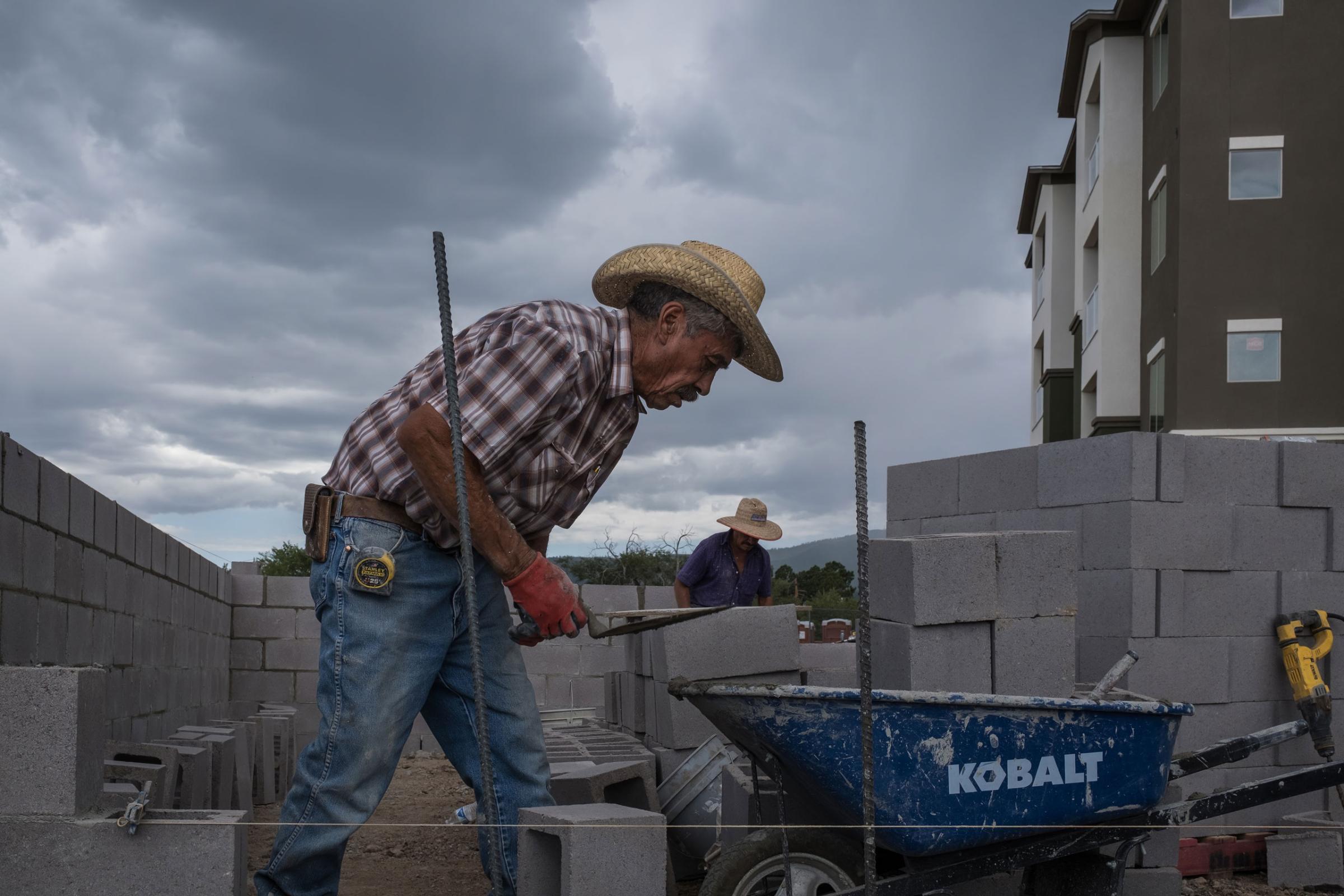
But finding suitable spots for new construction is a challenge. In addition to the nearly 40-sq. mi. lab, Los Alamos is hemmed in by canyons and abuts Bandelier National Monument. The lack of housing is concerning not only because of the incoming workers, but also the teachers, doctors, and other professionals who will be needed alongside them. “We’re just out of space,” says Denise Derkacs, a former lab employee who now serves on the county council. “We would love to help support the lab more, but we just have no more land to build on.” This lack of available space has forced Los Alamos to forge closer ties with communities off the hill. The lab leased two buildings in Santa Fe, located more than 30 miles to the southeast, where it moved hundreds of employees not involved in classified work. The transition, which began in 2021, marked the first time in a half century that the lab had a presence in the city.
The pace of expansion is stunning to those familiar with Los Alamos, including Siegfried Hecker, who served as lab director from 1986 to 1997. “It isn’t the Cold War, but it’s a Cold War-like environment,” Hecker told me. “I did not expect a renewed arms competition when I left Los Alamos.”
In the last two years of his term at the lab, Hecker signed the first annual letters of certification attesting to the safety, security, and reliability of the weapons in the U.S. nuclear stockpile. Those letters, delivered each year to the U.S. secretaries of defense and energy, reads in part: “I certify that the nuclear weapons we designed are safe and reliable without the resumption of nuclear testing at this time.” Every sitting president must have this letter on his or her desk to have complete confidence in the nuclear arsenal. Hecker told me signing that letter marked a consequential moment in his life, and in the history of the nation.
Resuming pit production is necessary, Hecker believes, because of the unanswered questions about how plutonium ages. But he anticipates the process will trigger calls to resume underground weapons testing in Nevada, in order to redouble confidence in the old stuff and to ensure the new stuff works. “I don’t think the government will do that, because that will open Pandora’s box,” he said. “If we go back and test, we will lose more than we gain.” Of the nine nuclear powers, only North Korea has tested in this century. If the U.S. begins doing so, other nations are sure to follow suit.
In the high-stakes world of nuclear weapons, a single political decision sets off an unpredictable chain reaction that can put us all at risk. As we enter this new nuclear era, it’s not yet clear how much we’ve learned from the past.—With reporting by Leslie Dickstein
TIME receives support for nuclear security coverage from the Outrider Foundation. TIME is solely responsible for all content.
Correction appended, July 25: The original version of this story misstated the size of Los Alamos National Laboratory. It is nearly 40 sq. mi., not 40 acres.
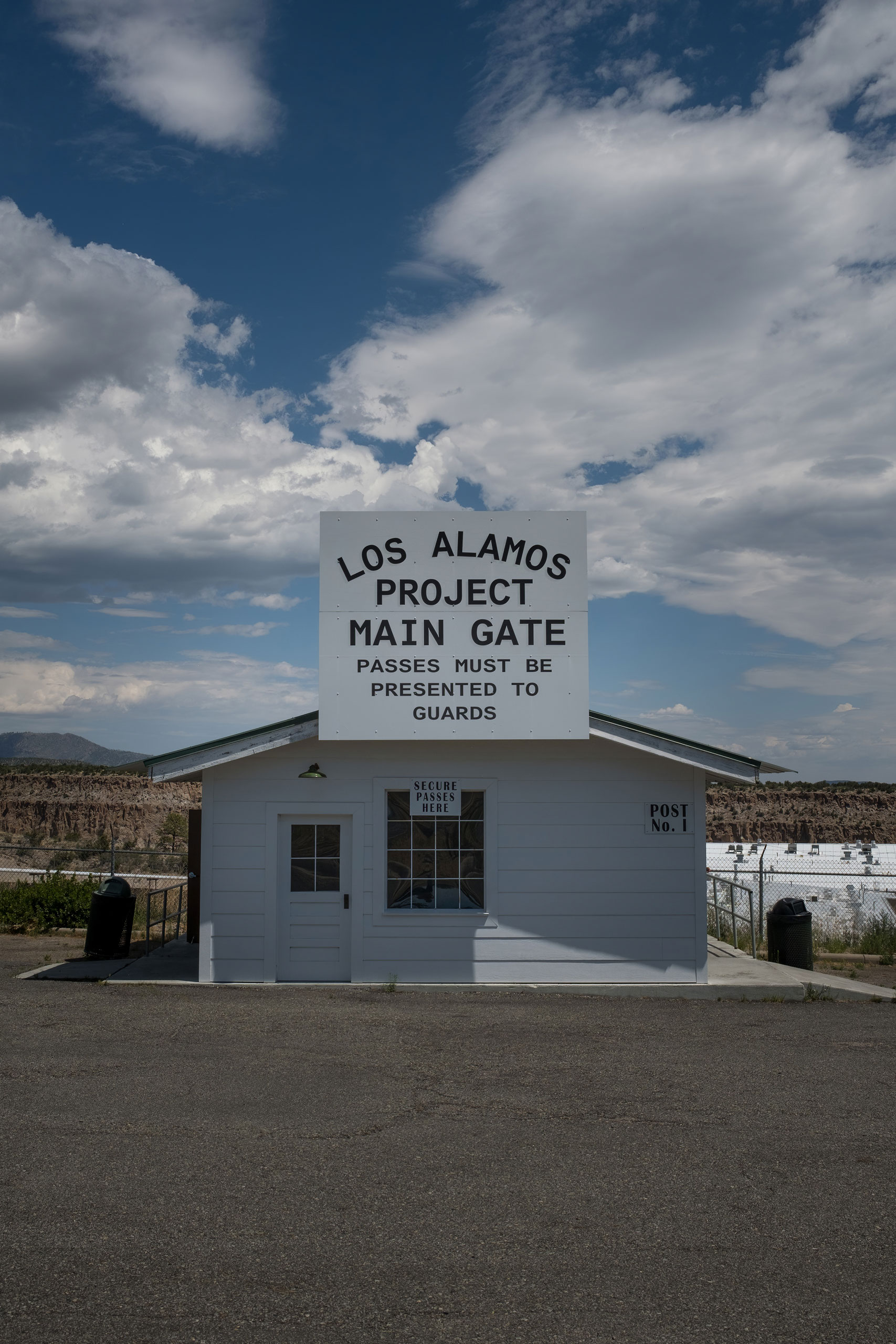
More Must-Reads from TIME
- Inside Elon Musk’s War on Washington
- Meet the 2025 Women of the Year
- The Harsh Truth About Disability Inclusion
- Why Do More Young Adults Have Cancer?
- Colman Domingo Leads With Radical Love
- How to Get Better at Doing Things Alone
- Cecily Strong on Goober the Clown
- Column: The Rise of America’s Broligarchy
Write to W.J. Hennigan/Los Alamos, N.M. at william.hennigan@time.com
